Are you looking for a healthy, gluten-free grain to add to your diet? Look no further than Quinoa!
Quinoa is a grain that has many health benefits, and it's easy to incorporate into your meals. Read on to learn more about the fantastic benefits of Quinoa that may surprise you!
Related: 10 Best Super Foods to Lower Blood Pressure
Quinoa Benefits: The Surprising Truth About This Superfood
Click here to jump to the infographic
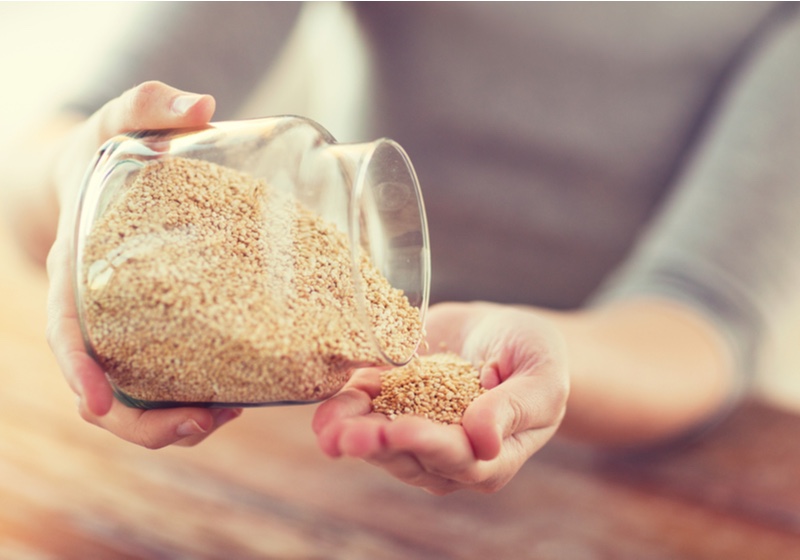
What is Quinoa?
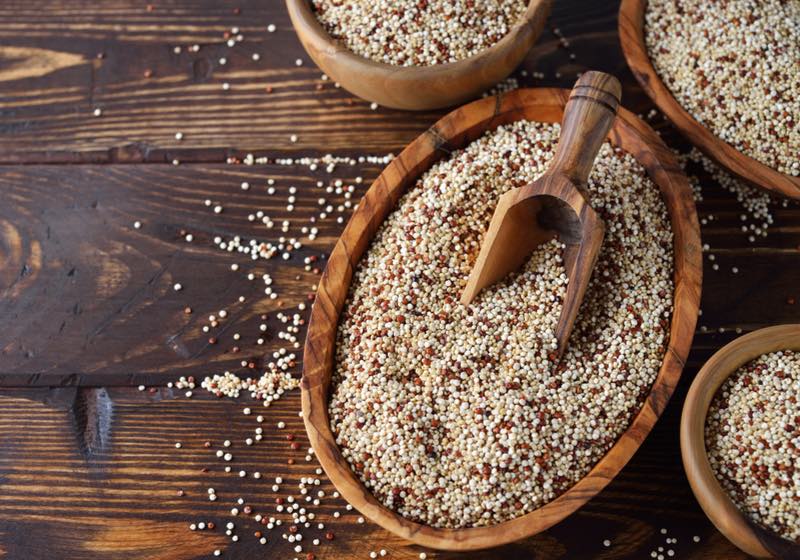
Known as the “mother of all grains,” Quinoa is pseudocereal rich. It is rich in protein, fiber, minerals, and vitamins.
Quinoa was around five thousand years ago in South America. It has been a staple in the region because it is nutritious and easy to prepare.
As a result, it has globalized and is now one of the best superfoods to consume by the health-conscious.
Although Quinoa acts as a whole grain, it is a seed from the goosefoot plant.
Although you can cook and eat quinoa seeds, the quinoa plant is more like beetroots and spinach. So, you may eat both the roots and leaves of this versatile, nutritious plant.
Quinoa is soft and fluffy when cooked, with a nutty taste. You can also make it into flakes, flour, and foods like bread and pasta.
Types of Quinoa Seeds
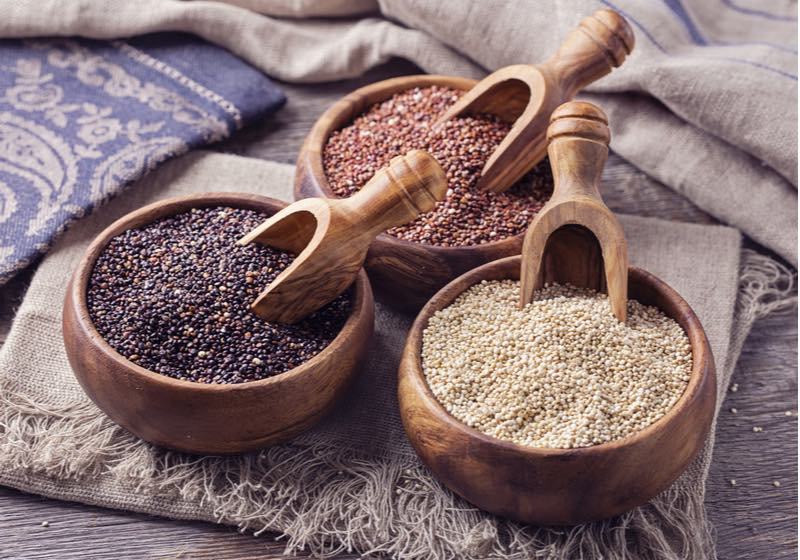
Quinoa comes in various colors, including white, red, and black. Farmers cultivate over 120 types of Quinoa. But the most common varieties sold in supermarkets are white, red, and black Quinoa.
- White Quinoa takes the shortest amount to cook. It has the mildest flavor and crunchy texture.
- Red Quinoa seeds are rich in flavor and crunch.
- Black Quinoa seeds need the longest cooking time. But it is the most flavorful and crunchiest.
Other Types of Quinoa Seeds
- Yellow Quinoa Seeds
- Grey Quinoa Seeds
- Orange Quinoa Seeds
- Purple Quinoa Seeds
- Pink Quinoa Seeds
- Green Quinoa Seeds
Quinoa Benefits: The Health Benefits of This Gluten-Free Grain
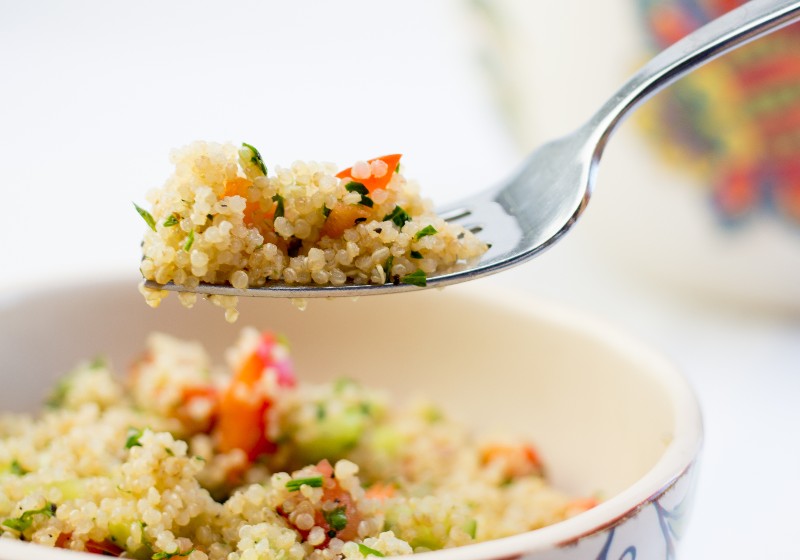
If you're looking for a nutritious and delicious grain to add to your diet, Quinoa is a great option.
Many quinoa benefits make it a great addition to your diet. Here are some of the top quinoa benefits:
1. Quinoa is a good source of fiber.
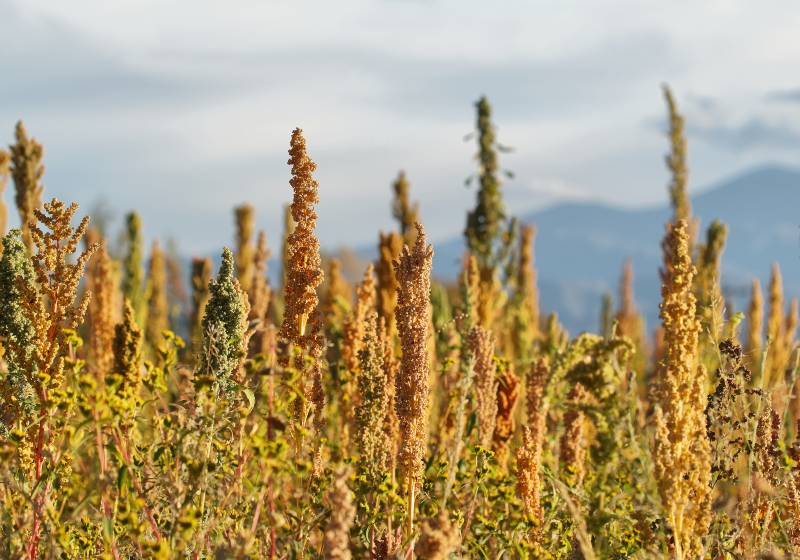
Another significant benefit of quinoa is its high fiber content. Quinoa is Very High in Fiber, Much Higher Than Most Grains
Quinoa can help promote digestive health and prevent constipation.
According to one study, quinoa contains 15–31 grams of fiber per cup. The study found 10–16 grams of fiber per 100 grams, comparing four quinoa types.
10–16 grams of fiber per 100 grams equals 17–27 grams per cup. This amount of fiber is far higher than most grains (more than twice as high as other grains).
Boiled quinoa contains much less fiber, gram for gram because it absorbs much water.
Unfortunately, most of the fiber is insoluble. Insoluble fiber doesn't have the same health benefits as soluble fiber.
The soluble fiber content in quinoa is still quite decent, with about 2.5 grams per cup or 1.5 grams per 100 grams.
Many studies show that soluble fiber can help:
- Reduce blood sugar levels
- Lower cholesterol
- Increase fullness
- Help with weight loss
2. Quinoa is anti-inflammatory.
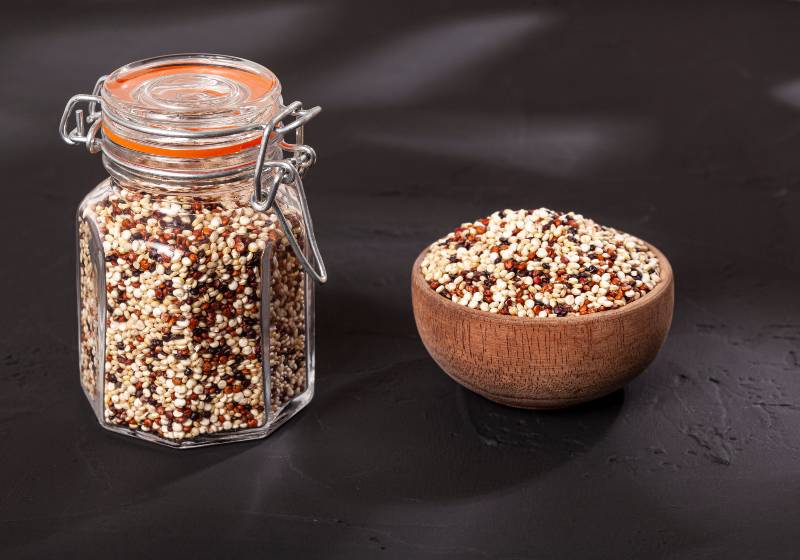
Free radicals are reactive molecules that attack body cells and other biological molecules. These attacks cause oxidative stress.
Free radicals are reactive molecules that attack body cells and other biological molecules. These attacks cause oxidative stress.
Quinoa's flavonoids help reduce oxidative stress and free radical damage when grown. These reduce inflammation.
3. Quinoa is Gluten Free
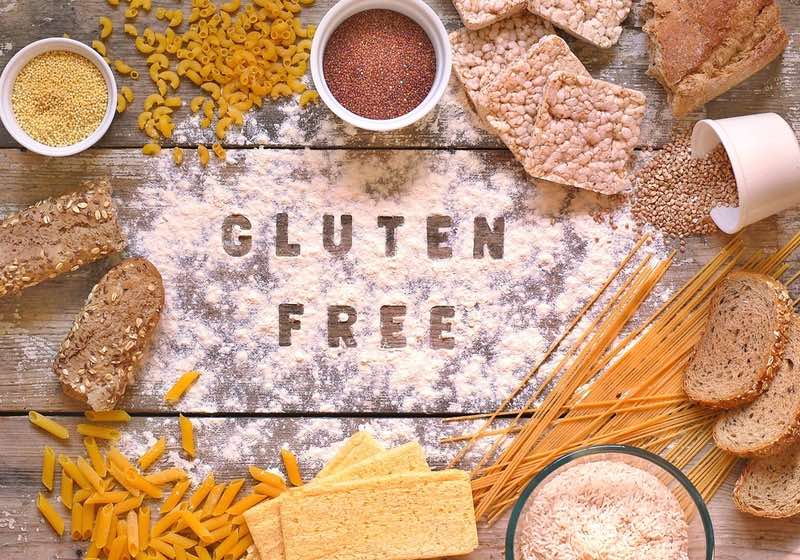
Many researchers look at quinoa as a healthy ingredient in gluten-free diets.
Quinoa is a gluten-free grain. If you are celiac or have a gluten intolerance, quinoa is an excellent grain to add to your diet.
Quinoa is a great gluten-free diet for people who don't want to give up staples like bread and pasta. Quinoa can replace gluten-free ingredients like refined tapioca, potato, corn, and rice flour. Replacing typical gluten-free ingredients with quinoa can increase nutrient and antioxidant value.
According to a 2013 survey, about one-third of people in the US try to cut or avoid gluten.
When people eat gluten-free foods made with refined starches, problems arise. These foods are no better than their gluten-containing counterparts. Unfortunately, gluten-free junk food is still junk food.
A gluten-free diet can be healthy as long as it’s from natural foods. It can be beneficial if it’s from raw foods.
If you're looking for a healthy, gluten-free grain to add to your diet, Quinoa should be at the top of your list.
4. Quinoa is a powerhouse of nutrition.
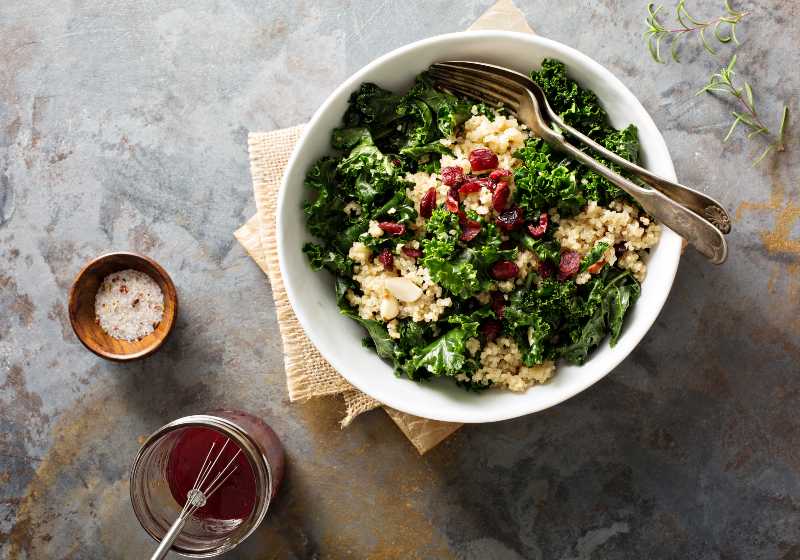
Quinoa is a good source of vitamins and minerals. These include magnesium, iron, potassium, and vitamin E.
Adding Quinoa to your diet can help you reap all these quinoa benefits.
Quinoa Nutrition Facts
Quinoa Nutrition Facts per Cup (185 grams of cooked Quinoa)
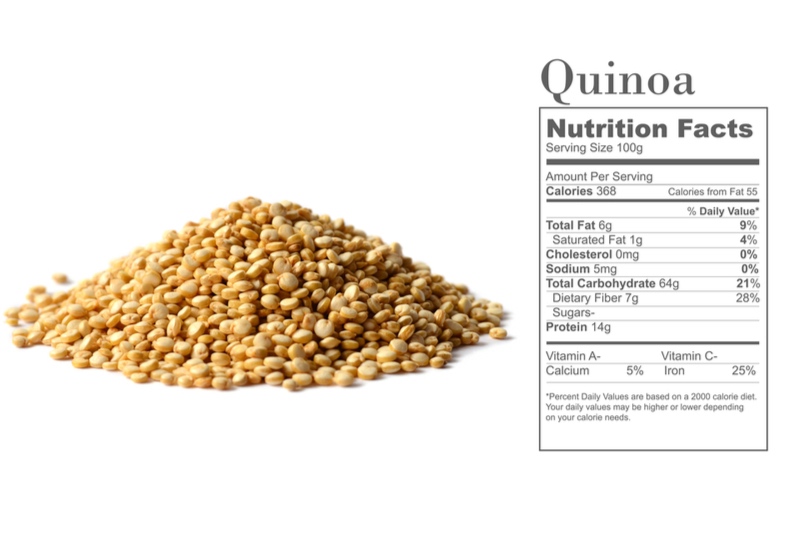
- 8 grams of protein
- 5 grams of fiber
- 58% of the RDA for manganese,
- 28 to 30% of the RDA for phosphorus and magnesium
- 13 to 19% of the RDA of folate, copper, iron, and zinc
- 9% of the RDA for potassium
- over 10% of the RDA for vitamins B1, B2, and B6
5. Quinoa is a complete protein.
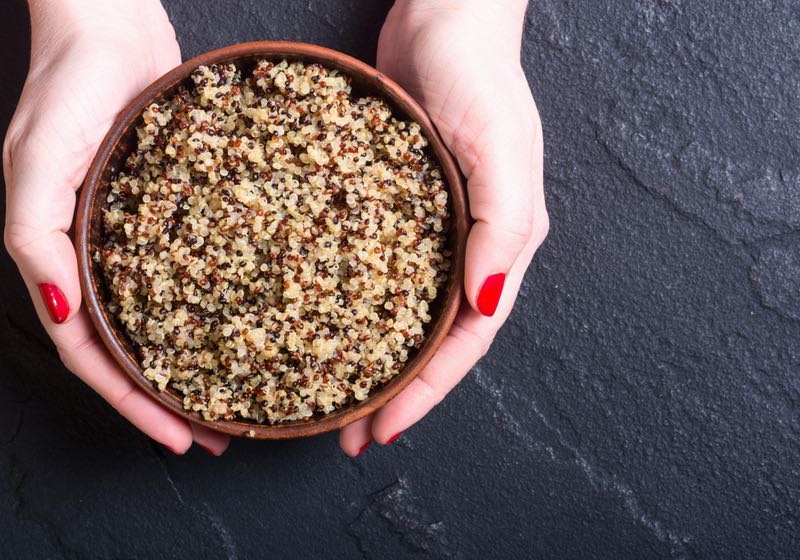
Quinoa is an excellent source of protein derived from plants.
It contains all nine essential amino acids. Your body needs these essential amino acids for growth and maintenance.
Quinoa is a high-protein grain that can help you get your daily protein needs on a plant-based diet.
If you follow a plant-based diet, you still need protein. And you may get protein from non-animal sources to avoid deficiency. For example, quinoa is an excellent plant-based source of complete protein.
Anyone following a vegetarian or vegan diet may consume quinoa.
One cup of cooked Quinoa, weighing 185 grams (g), contains 8.14 grams of protein.
6. Quinoa is high in Lysine.
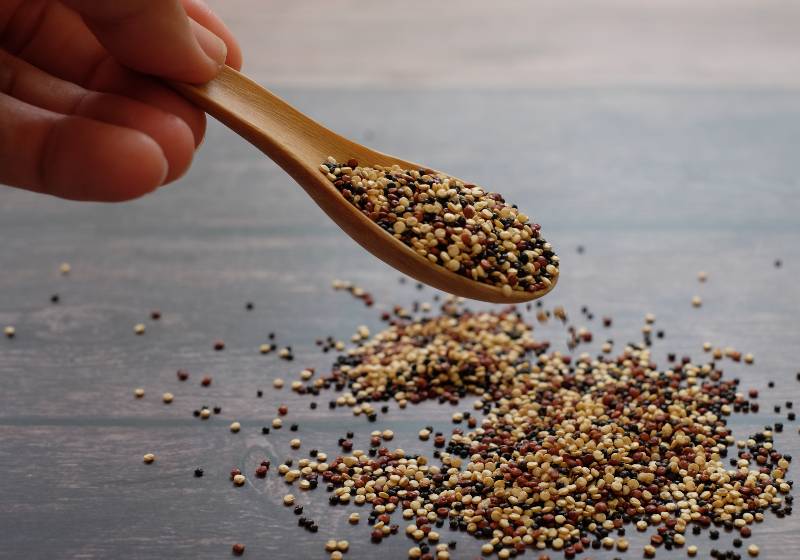
Lysine is unusual from many other grains. Lysine is an essential amino acid necessary for protein synthesis.
Lysine plays a role in growth and development processes. Although Lysine deficiency is uncommon, this deficiency can lead to various medical problems.
7. Quinoa is high in fiber.
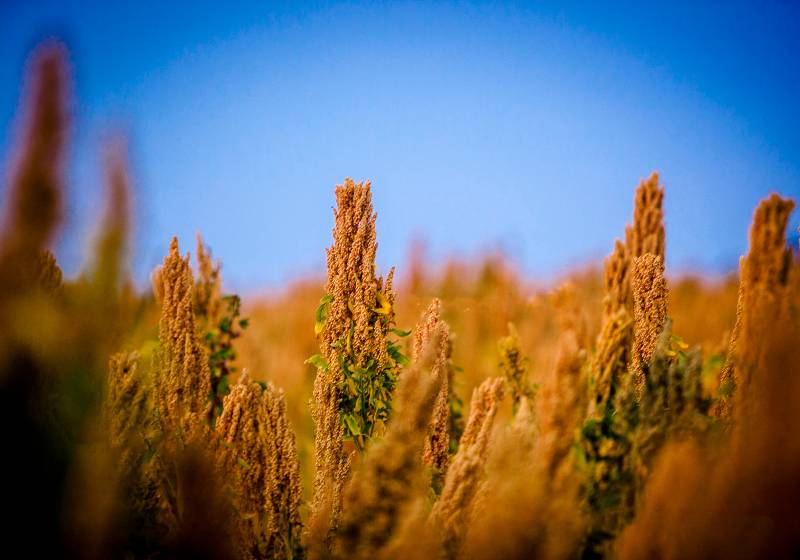
One of the great quinoa benefits is its high fiber concentration. Quinoa has a high fiber concentration compared with other grains, providing a 5.18 g in a single 185 g serving. The average adult requires 2,000-2,500 kcal per day. But, this varies based on a person's age and sex.
Consuming enough fiber can help decrease the risk of several diseases:
- Constipation
- High cholesterol
- High blood pressure
- Diverticulosis
8. Quinoa is rich in antioxidants.
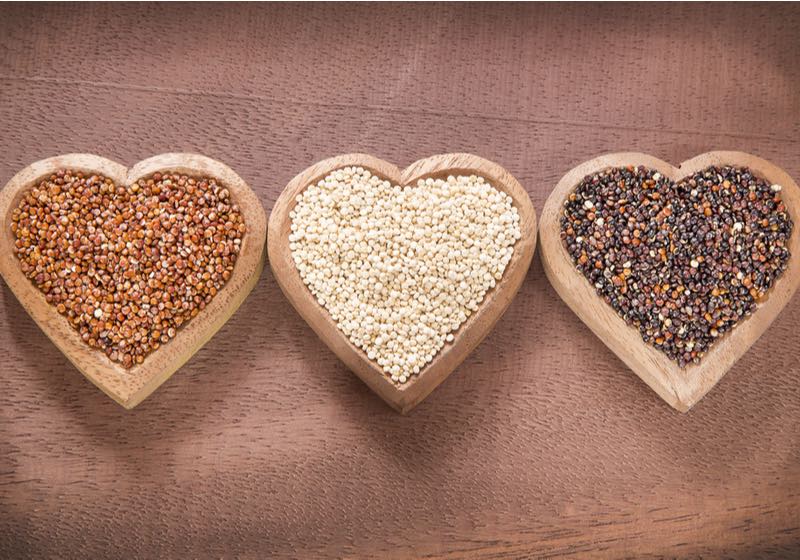
Quinoa has more antioxidants than other common grains in a gluten-free diet.
Corn, rice, and potato flour are the most frequent ingredients in gluten-free meals. But these provide fewer nutrients than those manufactured with Quinoa.
Quinoa flour is one ingredient manufactured with quinoa.
9. Quinoa is an excellent source of Vitamin E
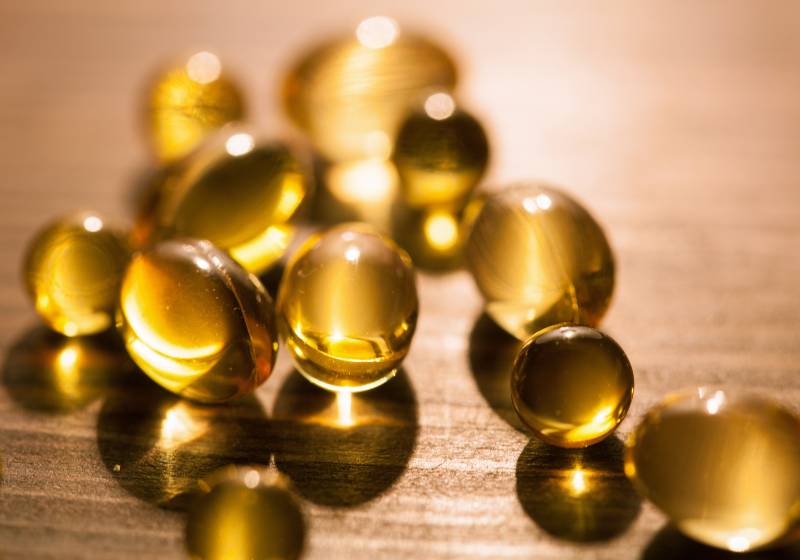
Quinoa is a good source of vitamin E.
Quinoa contains all eight essential amino acids in optimal proportions.
Vitamin E is an antioxidant that may assist with the prevention of:
- Heart Disease
- Various Cancers
- Several Eye Diseases
The antioxidant potential of whole grains has been well-documented in medical research.
Research supports the health benefits of grain consumption and its antioxidant capacity.
10. Quinoa is one of the best sources of manganese.
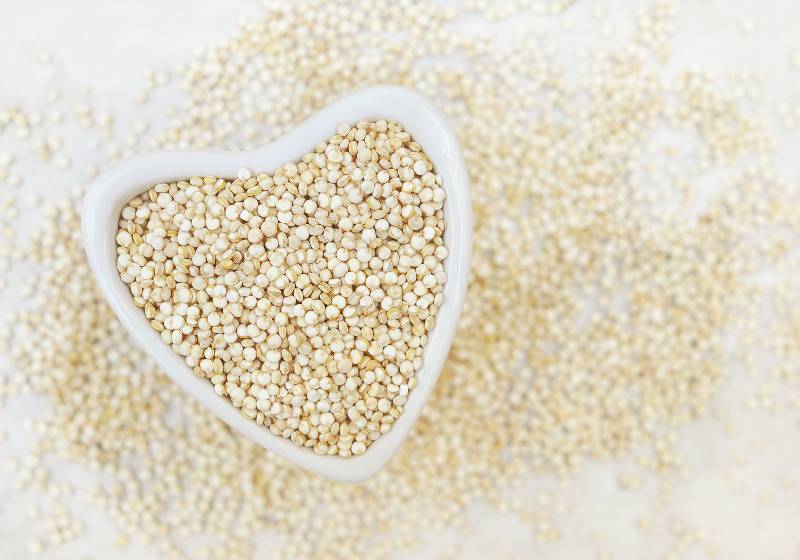
Our body needs manganese for growth and metabolism. This element also aids in the functioning of many enzymes in the body.
One cup of cooked Quinoa has 1.17 milligrams (mg) of manganese.
1.17 mg of manganese accounts for around 27.43% of males' recommended daily manganese intake. It also accounts for 35.05% of recommended daily manganese intake for females.
11. Quinoa is a good source of iron.
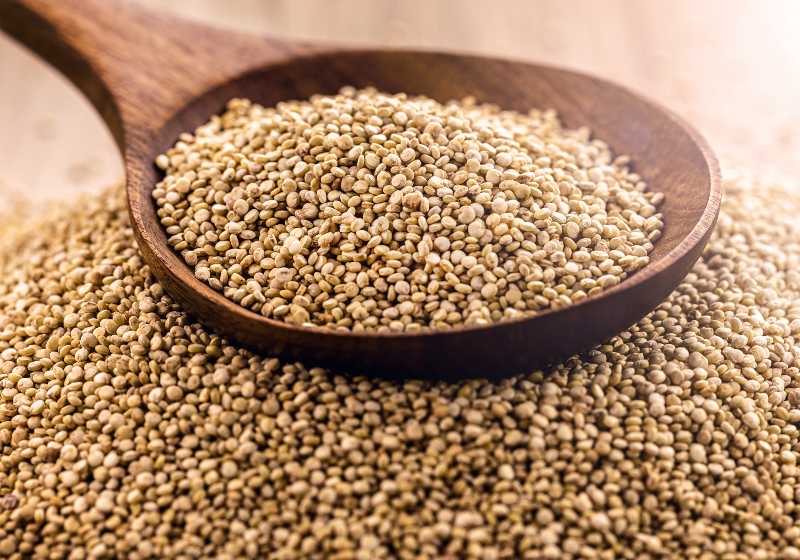
Maintaining adequate iron levels is critical to good health. The human body requires iron for various functions.
For example, iron is an essential component of hemoglobin. Hemoglobin chemical transports oxygen in the blood. It allows energy and cell function throughout the body.
Quinoa has high iron content. A cup of quinoa contains 2.76 mg of iron. It accounts for 3.5% of the recommended daily amount for males. Also, it accounts for 1.56% of the recommended daily amount for females.
Adequate iron intake is also beneficial to connective tissue and muscle function.
12. Quinoa is High in Folate
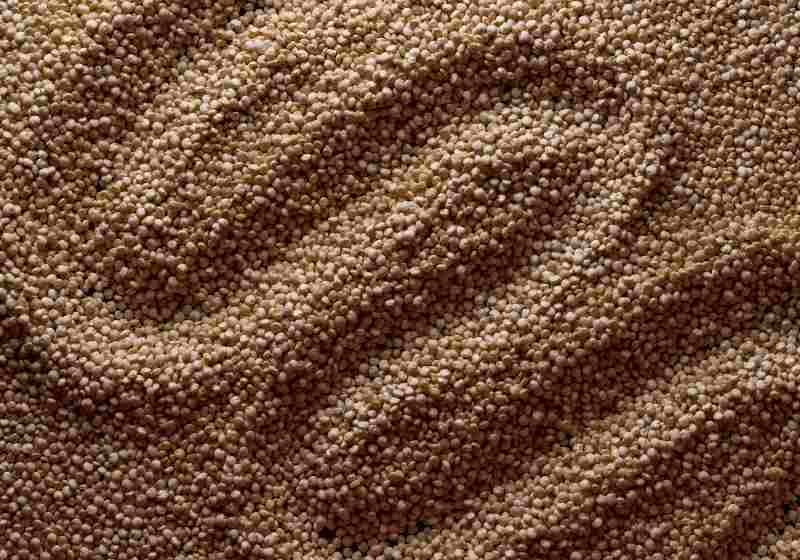
Folate is a vital B vitamin that aids in the formation of DNA.
Having adequate folate intake may help with several malignancies and depression. And other mental health problems.
Consuming more folate in food may help to prevent deficiency. For example, Quinoa provides a decent amount of daily folate value.
One cup of cooked Quinoa has 77.7 micrograms (mcg) of folate, or 19.43 percent recommended daily intake.
Pregnant women must take folic acid supplements to get enough folate. Pregnant women must get enough folate to lower their babies' risk of neural tube defects (ODS).
13. Quinoa has a Low Glycemic Index.
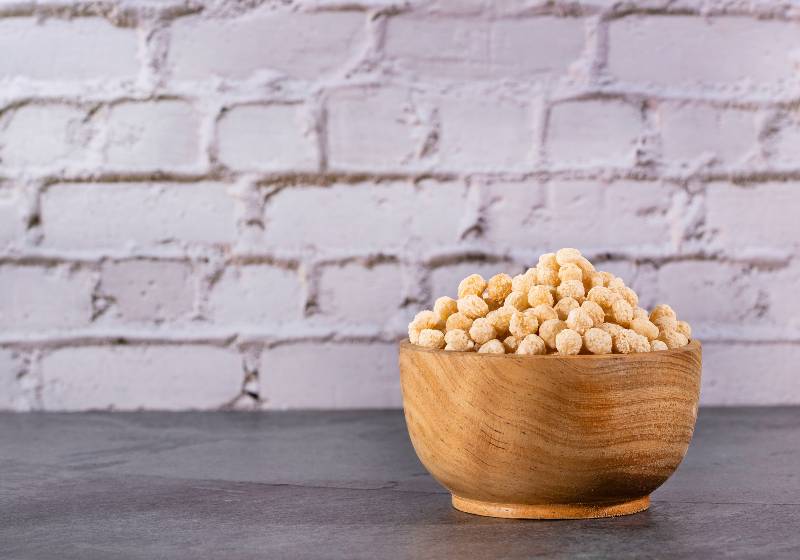
Quinoa is low on the glycemic index (GI), making it safe for people with diabetes.
Also, it helps keep blood sugar levels under control.
14. Quinoa Benefits Weight Loss
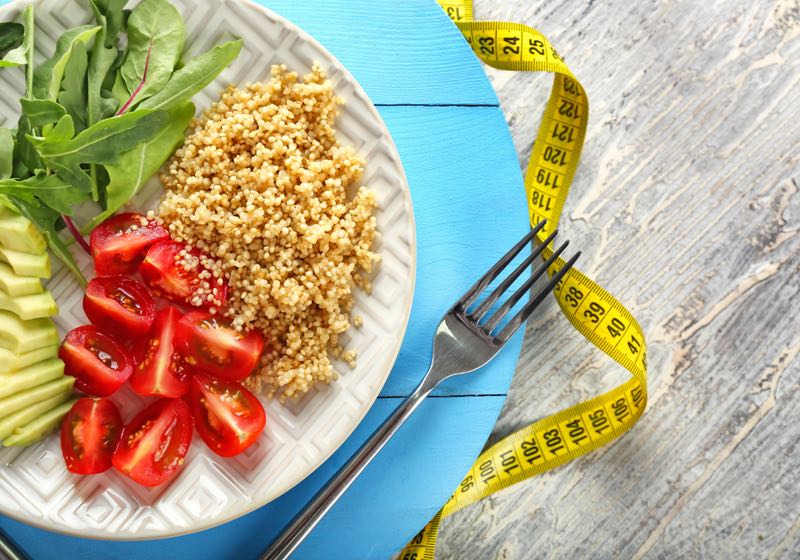
Quinoa aids weight loss. With Quinoa being an insoluble fiber, it helps you feel full. Also, Quinoa helps keep you fuller for longer, aiding in weight loss.
Quinoa is also rich in dietary fiber and protein. As a result, it increases metabolism and reduces food cravings, decreasing calorie intake.
Quinoa provides more protein and fiber. So, Substituting traditional grains (like rice or wheat) with Quinoa could help weight loss.
Quinoa is particularly helpful for vegetarians trying to lose weight. It can help meet their protein needs as well as fill them up.
Quinoa is an excellent choice for weight-conscious people. It helps curb appetite and adds a nice texture to food.
15. Quinoa Benefits Diabetes

If you have diabetes, you know that it is vital to watch what you eat. Quinoa is an excellent meal for people with diabetes due to various factors.
Flavonoids from quinoa help reduce oxidative stress.
Oxidative stress is high in people with diabetes. Also, flavonoids increase insulin production, which is beneficial to those who have diabetes.
If you have diabetes, you know that it is vital to watch what you eat. Quinoa is an excellent meal for people with diabetes due to various factors.
Flavonoids from quinoa help reduce oxidative stress.
Oxidative stress is high in people with diabetes. Also, flavonoids increase insulin production, which is beneficial to those who have diabetes.
Quinoa is a low-fructose, low-glucose glycemic index crop.
Carbohydrates are a big part of managing blood sugar levels.
Quinoa is an excellent source of carbs that does not give you the same insulin spikes as wheat.
Eating meals with a low glycemic load may help to cut post-meal spikes.
A quinoa salad with lots of raw vegetables does not cause a spike in blood sugar levels for type 1 and 2 diabetics.
Quinoa is a good source of magnesium. Magnesium is an essential mineral for people with diabetes. Magnesium helps regulate blood sugar levels and helps prevent type II diabetes.
Quinoa is a versatile grain that you can use in many different recipes. Try adding Quinoa to soups, stews, and salads, or even using it to replace rice. Quinoa is a great way to get the nutrients you need while also managing your blood sugar levels.
If you have diabetes, Quinoa is a great grain to add to your diet. It has many health benefits and can help you control your blood sugar levels.
16. Quinoa is easy to incorporate into your diet.
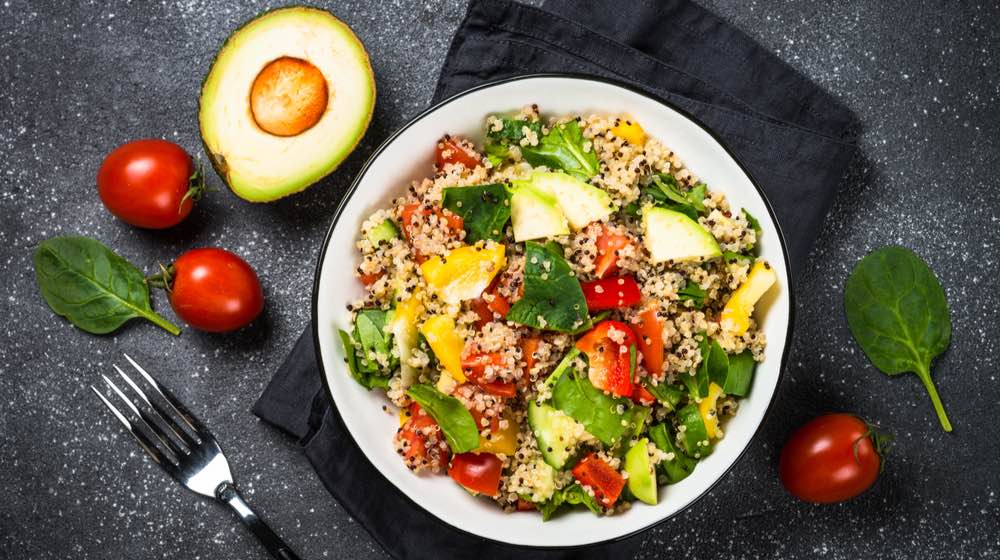
While this is not a direct health benefit, it is nonetheless essential.
Quinoa is tasty and goes well with many foods. You can eat Quinoa as a side dish or use it in place of rice or pasta.
Depending on the type of quinoa, you might need to rinse quinoa before cooking. First, rinse quinoa with water to remove saponins. Saponins have a bitter flavor, and you can find them on the outer layer of quinoa.
Some other brands rinse quinoa already, making this step unnecessary.
You can buy quinoa in most health food stores and supermarkets. It can be ready to eat in 15 minutes.
How to Make Quinoa | Quinoa Cooking Instructions
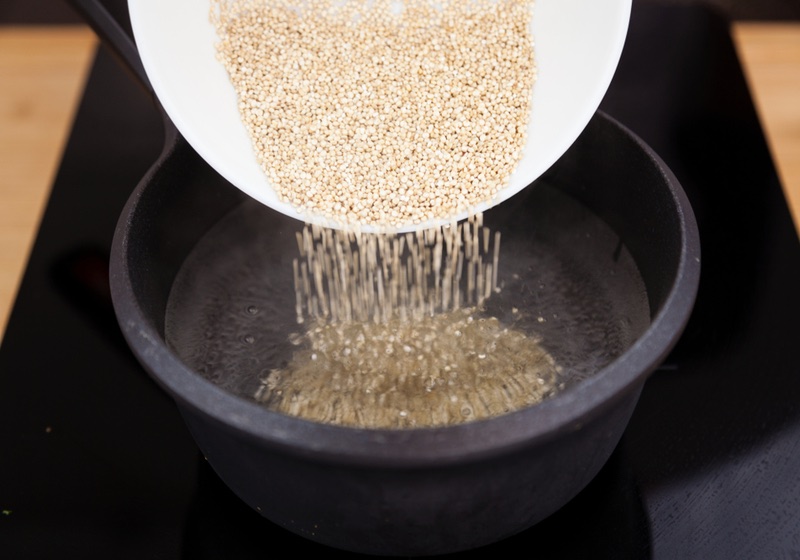
- Put 2 cups (240 ml) of water in a pot, and turn up the heat.
- Add 1 cup (170 grams) of raw quinoa with a dash of salt.
- Boil for 15 minutes.
- Enjoy.
Quinoa has already absorbed most of the water and gotten a fluffy look by this time. It should have a mild, nutty flavor and a satisfying crunch if done right.
You can find quinoa recipes for breakfast bowls, lunches, and dinners online. It is easy to find many healthy and diverse recipes for quinoa.
Is Quinoa Healthy For You?
Quinoa is a good source of protein, fiber, iron, thiamine, copper, and vitamin B6. Also, it is an excellent source of phosphorous, manganese, magnesium, and folate.
Quinoa makes you feel fuller longer. Thus helping you lose weight or maintain your current weight.
Quinoa's high fiber content regulates your digestion and prevents constipation.
And if that's not enough, Quinoa may also protect against a range of chronic conditions.
Here's an infographic guide that you can use. Feel free to download, save and share it with your loved ones: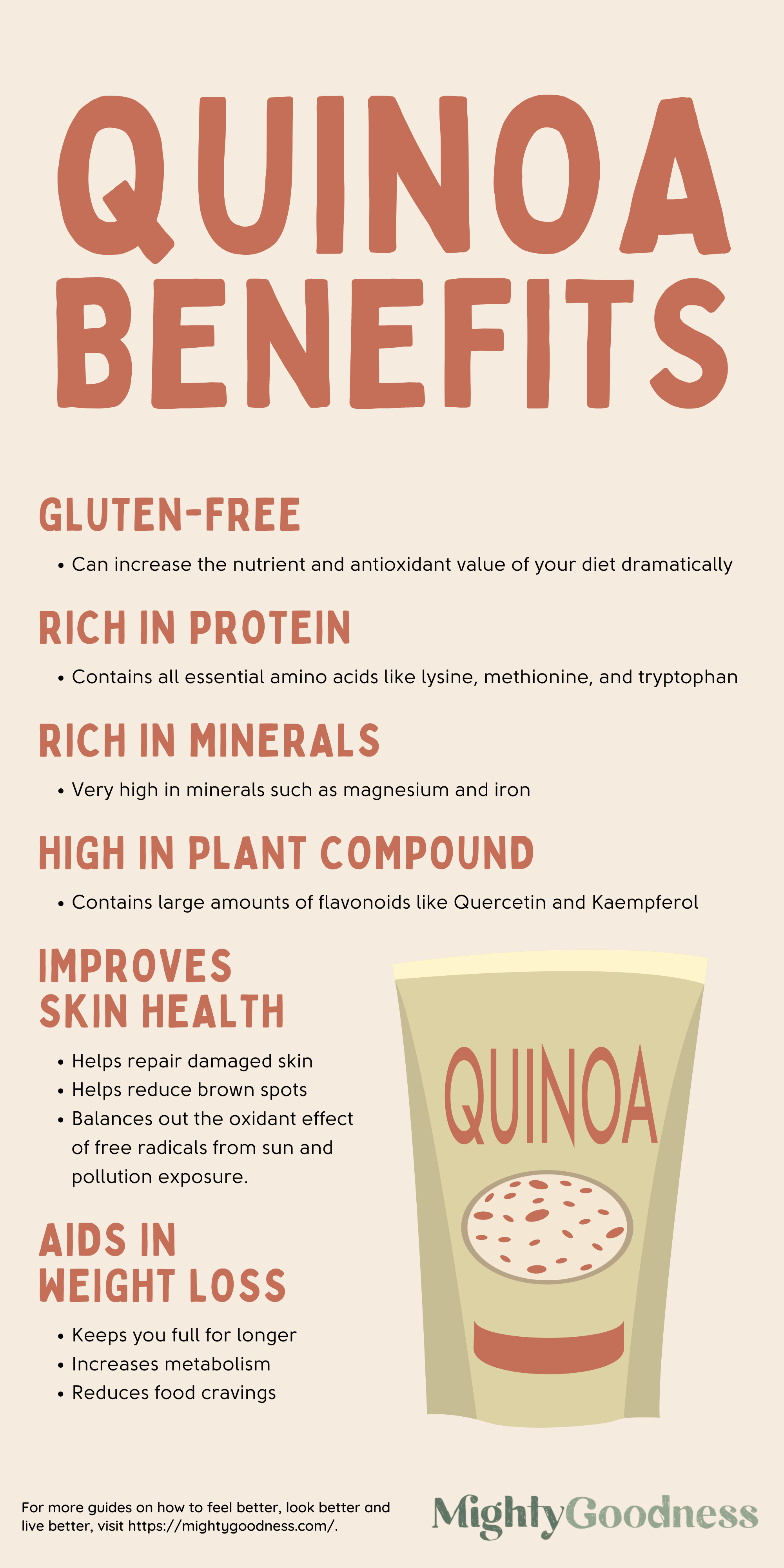
Check out this video from Skinny Recipes to learn how you can Lose Weight Fast with Quinoa:
You Might Also Like:
Trending
Best Multivitamin for Men | Top 10 Best Multivitamins for Men 2022
Tongue Color | 7 Scary Tongue Color Meanings
Get Updates
SIGN UP FOR OUR NEWSLETTER TODAY


Best Multivitamin for Men | Top 10 Best Multivitamins for Men 2022

